#quelaag
Explore tagged Tumblr posts
Text

CHAOS WITCH
480 notes
·
View notes
Text

Fromsoft arthropod women my beloveds
#fromsoft#dark souls#dark souls 1#ds1#dark souls 2#ds2#elden ring#shadow of the erdtree#quelaag#chaos witch quelaag#scorpioness najka#romina saint of the bud
643 notes
·
View notes
Text
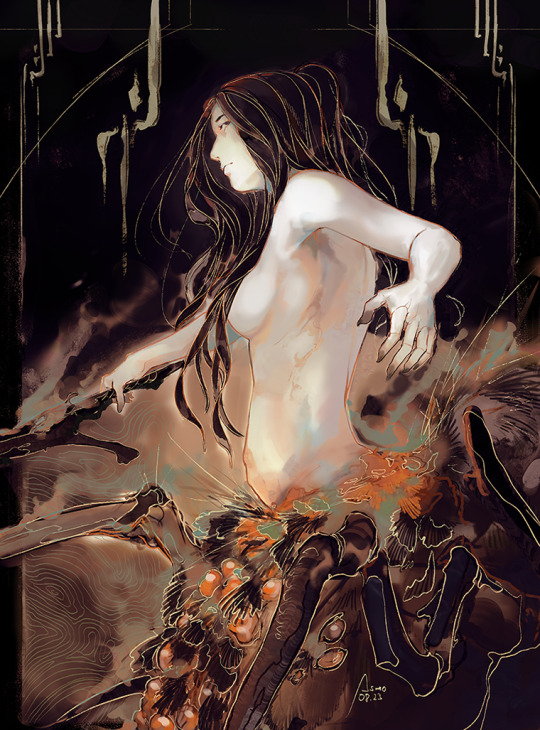
Quelaag
#Dark Souls#Chaos Witch Quelaag#Quelaag#fanart#sketch from some months ago. dug it out to finish just for fun
2K notes
·
View notes
Text


Just two baddies turned into pokémon form by @drooling_demon on twitter!
#dark souls 1#dark souls#soulsborne#soulslike#fromsoft#fromsoftware#pokemon#dark souls fanart#quelaag#chaos witch quelaag#crossbreed priscilla#priscilla#dark souls wife
119 notes
·
View notes
Text




Some falins and quelaag

106 notes
·
View notes
Text

do you see it
#dark souls#elden ring#shadow of the erdtree#elden ring sote#quelaag#chaos witch quelaag#romina#romina saint of the bud#john.txt
108 notes
·
View notes
Text
'Trans-ing' death; an essay of gender allegories:
Abstract (the fancy word for a tl;dr):
In media exists themes that are shared throughout media as a collective human experience. Within this collective, the extant concepts of death and rebirth are analogous with those of maturity, growth, and change throughout ones life.
The primary example that one may use is the correlation between the posited themes, and the shared experiences of many transgender persons and communities across the internet — Within this postulated "collective experience" that said communities share, their live's stories are correlated with those themes of death and resurrection. This association between a commonplace theme (death, rebirth) alongside its connotations in the collective unconscious of that community/humanity (change, growth), and the experiences that a particular group may endure, leads to a plausible correlation between media depicting major themes of change and the aforementioned transgender experience, whenceforth media depicting said themes may be interpreted as an allegory.
Trans allegories can take many forms in media due to the wide range of shared and collective experiences natural to humanity as a whole, alongside the wide range of symbolic events and ideas that can be strewn as allegorical in nature.
A primary example i will be drawing from in this overview is the Project Moon series, alongside various literary sources, if any section contains spoilers for its media, it will be noted in advance.
My philosophy regarding allegories, especially those relating to such a viscerally human (and thus diverse) topic, is that there are no wrong answers, in its essence, everything and anything can be an allegory, regardless of the intent of the author. The Death of The Author brings the "life" of the reader, allowing their creation to exist beyond its creator's confines (a concept which will be elaborated on).
In large my opinion has been impacted by the idea of "Yuri of Absence", also known as the "This Too is Yuri", wherein any element of struggle; any paradigm shift a character undergoes; any longing for themselves or another, for a better world; any journey that one's story encompasses, is inherently allegorical in nature so long as one may imagine it as such.
That's the preamble, now I'm going to go through different motifs and themes and how they can be used as or related to in this vein.
Death:
I have already written on this in the past, and i intend to write about it again in the future when discussing the concept of rebirth or life as an allegory of many sorts, however i want to note on it here because of how it acts as the beating heart of several other themes, separate but integrally linked to death in their nature.
Death is inherently a concept linked with change, it marks the ultimate paradigm shift in ones life — Death is an instinctually meaningful idea for all persons living, the idea that one day, one moment, there will be a time that the moments come no more.
Death does not end only in the death of a person however, the death of a country, of a title, of a group, of an identity, all encompassed by this same idea.
The concept of death, specifically linked to that of an identity, is one that is far from foreign to trans communities, the concept of a "dead-name", many referring to their past as a "previous life" or their transitioning as a "death" of whom they used to be.
Death, though initially a foreboading and overwhelming concept, does not conform to the strict consuming nature that many first feel it to be; In death comes the final rest, the moment at which sufferings, worries and all your sorrows come to an end. There is a comfort to be found in death, the comfort of knowing that your suffering is not eternal, that there will be an end to all things. In the chrysalis of death comes the end to your sorrows, your suffering, and crawls forth from the cocoon a stronger, happier person, able to fly freely with their newfound wings.
I have already used this as an example before and time again, the 'Funeral of Dead Butterflies' from the game(s) Library of Ruina and Lobotomy Corporation, but i feel it encapsulates the meaning of death far better than i have any capacity to.
“Until then, they flutter their wings uselessly. The wings that may have been many jumbled into one, or one split into many. Butterflies are supposed to pollinate flowers, but not a single proper flower blooms in this place. There is no choice but to wait. After all, there must be an end to every world.”
There will be an end to all things; no matter how suffocating, how eternally you think to be trapped, there will come a time for you to use your wings, to fly in a place where flowers bloom, to live as you should live, as you were meant to live.
Death in itself is an comfort, a dread, a beginning and an end. In death there is the knowledge of life, and that life is not defined by the present moment of suffering.
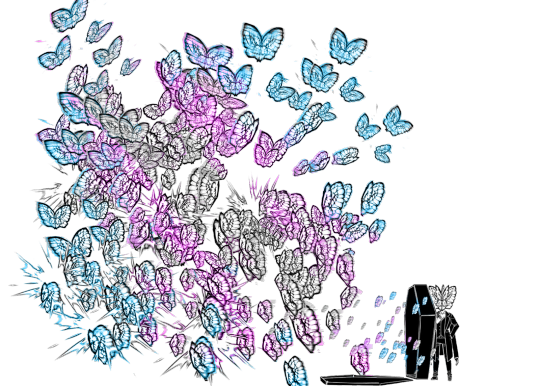
.
As was alluded to in the above paragraph, the aforementioned concept integrally tied to death, is of course, the image of "life", as well as that of "rebirth" or "metamorphosis" — Life on its own does not inherently exist allegorically, but a coin cannot exist with only one side, invariably the motif of death will be linked to that of life, and as is said by many before "life carries on".
Metamorphasis:
Metamorphosis is an allegory of both life and death, ultimately summarised in the idea of "rebirth".
At the same time there are other implications that may be drawn from that of a "rebirth", those of which i will elaborate on when talking of Kafka's "The Metamorphosis".
However, i dont believe that i could do justice to this section better than the post which inspired its fully fledged inclusion (warning, 18+ blog, be warned)
You know. Romina instills such powerful thoughts within me... The burning sting of losing something, but the brilliant, twisted realisation that you can grow anew... Sometimes I fantasise about myself lying down to slumber... and as I sleep, my body begins to change. I feel as though ever since I have made the steps towards deciding I was trans, I feel like a bud. Pre-transition, I feel like a bud, waiting to bloom... This bud... Will transform... I fantasise about my body transforming, in a twisted, and beautiful way... I fantasise that my bottom half grows long, and takes the form of the torso and bottom of a centipede... A torso long enough so that I could be the one who cradles myself to sleep... So I can comfort myself... So I can have a form that truly feels special. A strange girl. A strange and monstrous girl, who draws both adoration and terror. Something truly beautiful...
-- @mossy-green-aka-ferrythemGreen, on 'Romina, Saint of the Bud' (Pictured Below) (Romina not mossy)

As mentioned, i cannot do the same justice to this idea as she has, and i do not wish to try, so instead i am swapping to purely analytical for the time being.
As she mentioned in her post above, there exists the "burning sting of losing something", the grief of loss, death of your past life, where you look back at what could have been — Alongside this death comes the beauty of a second birth, of a new form, a new life, standing straight, looking forward at the newfound path in front of you, and continuing forth to every possibility that can be. Moving forward in this new life with the fearlessness to keep on living, leaving behind your past, the weight and sorrows that are bound to it.
Becoming a better you. Becoming You.
-
And now comes the other half of this coin, the other plausible implications of Metamorphosis in an allegory.
As mentioned, I will be referring to 'The Metamorphosis" itself, and some other sources that are mentioned in turn.
[CW: mentions and references to Suicidal Ideation, Chronic Illness, Parental Abuse, Antisemitism (In the footnote)]
Keeping this somewhat brief as due to the aforementioned sensitive content: Kafka's The Metamorphosis, while open to being read as a trans allegory (from Gregor's physical changes and struggles adjusting to his new life) is a story about Kafka's own longing for death, his idea depiction of a slow deterioration and the effects that a chronic illness may have on those around oneself. Through Kafka's life, he wrote of his own death in extreme detail — While there is much more nuance than this, with context provided by Kafka's father's poor treatment, often punishing Kafka when he spoke out of line (such as when he told his father he wished to be a writer), however as to not turn this section writing purely about Kafka I wont be taking much more time for this topic.*
The Metamorphosis is a manifestation of Kafka's self loathing, his longing for death; Gregor acts as a surrogate, with a negligent family, and abusive father who "came hissing like a wild man" upon seeing Gregor come out of his room. Gregor's slow deterioration of both physical health and of his mind, through his emotional seclusion and neglect. The image of this transformation is most easily and clearly read as a burden, akin to that of a chronic disease: Gregor's decay is inevitable and constant through the story, being unable to do more and more things, losing eyesight, and suffering many injuries of mysterious origin, inevitably becoming an object and nuisance to his family, so much so that his death comes as a relief to those around him — I know many people who have shared this kind of thought, that if didn't suffer from their ailment, their restrictions and burden being both inescapable and irrespective of their actions.
A metamorphosis is not always representative of a change for the better, the irreversible, and undeserved changes that one can undergo in their life, which change it for the worst.
-
.* Note that Gregor's depiction as a vermin carries more weight than mentioned, additionally being representative of Kafka's Jewish descent, with the Nazi Party referring to the Jews as "Lice and Cockroaches", and a common antisemitic phrase referring to them as "Insects of humanity".
-
Other examples exist downstream of this concept, being that of change as a negative, notably Limbus Company's character of the same name, and Fromsoftware's Chaos Witch Quelaag.
To avoid confusion, Limbus Company's Gregor will be referred to as such, or as "bug guy", and Kafka's Gregor will be referred to as "Samsa"
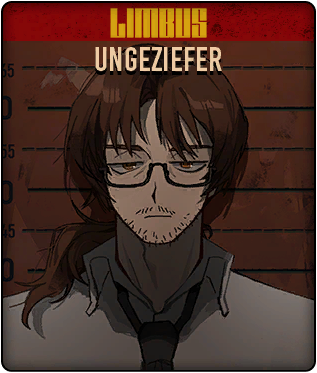
Gregor shares a similar story to that of his namesake, having an insectoid arm — LCB's Gregor exists as a direct allegory of disability, akin to that of Samsa's. Where the two differ is that Buy Guy's story may be read as a direct result of parental neglect or abuse, with the character 'Herman', whom genetically modified Gregor's arm in the past, referring to Bug Guy as her 'Son', whom she gave a lifelong burden to bear for her own gains.
Then Gregor, now Quelaag.
Quelaag may be taken as an allegory of better nature. I personally know many trans women who would want to look like this
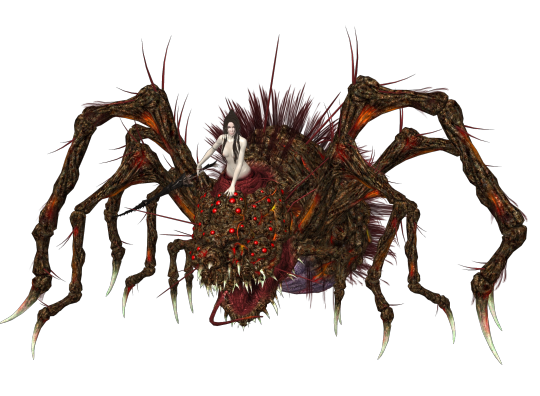
Quelaag's story is one of the same vein as the former two, being that of a parent's actions, and the lasting consequences on the children (and also using the same Insectoid/Arachnoid motif for trauma//Chronic illness?). This concept is extended in the review of "The Fair Lady", Quelaag's sister, who suffers deteriorating health similar to that of Samsa's: immobility, deteriorating eyesight and senses.
These themes exist as collective experiences and shared predispositions that a community, or humanity in whole, may have towards a certain concept. In this sense of collective human experience, one may find connection within the 'humanity' of stories; Within any given groups Conscious and Unconscious consensus exists keystone experiences that are innately, viscerally, human at their core — Death in a vacuum is not inherently connected with growth, with change, but through humanities perspective, our universal constant of growth, change, and, inevitably, loss, this "death" is personified, the agent of the end, of change, of entropy, all concepts which forthcome from humanities perspective.
If we continue to view this unconscious consensus as a latent, unseen paragon of these interpretations, of this integrally meaningful, 'Human' story; alongside it comes the understanding of not only yourself, but of your story, and the humanity present in these stories, in any story, in 'humanity'.
My message is fruitless if not for the understanding that whence these shared ideals come forth is an endless well of shared humanity, of the collective, unfiltered, beautiful, Human, experiences.
This is the first of a series, it will be continued in near future.
#project moon#limbus company#limbus#lcb#projmoon#essays i wrote primarily while half asleep#literally's illiteracy#Gregor samsa#the metamorphosis#franz kafka#Lobotomy Corporation#Funeral of Dead Butterflies#chaos witch quelaag#Dark Souls 1#Dark Souls#Quelaag#Queer#Allegory#Trans#Transgender#Trans Pride#lgbt pride#queer community#lgbtq community#queer pride#lgbtqia#lgbtq#First installment#Centipede#Centipede girl
36 notes
·
View notes
Text
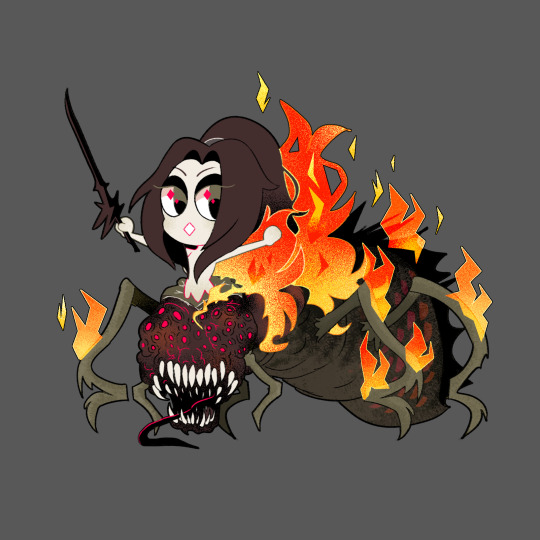

art from 2021 that i never postedd!!!
Quelaag and The Fair Lady (Dark Souls)
157 notes
·
View notes
Text

27 notes
·
View notes
Text
They could never make me hate you Chaos witch Quelaag,,,

#quelaag#chaos witch quelaag#dark souls remastered#he dark on my soul till i remaster#darksouls#soulsborne#dark souls#soulslike
51 notes
·
View notes
Text
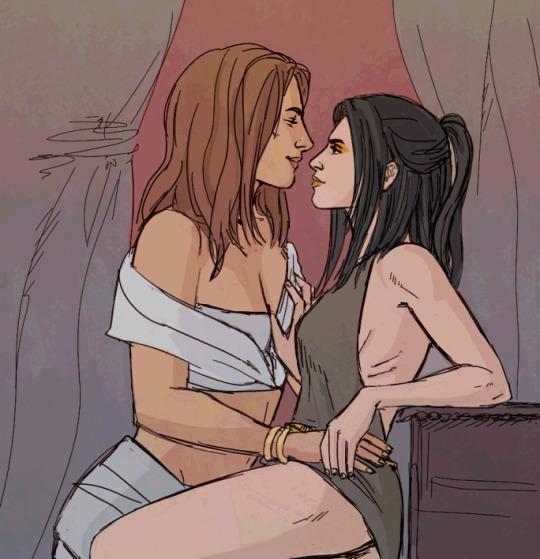
sunlight and demonfire 👑
246 notes
·
View notes
Photo
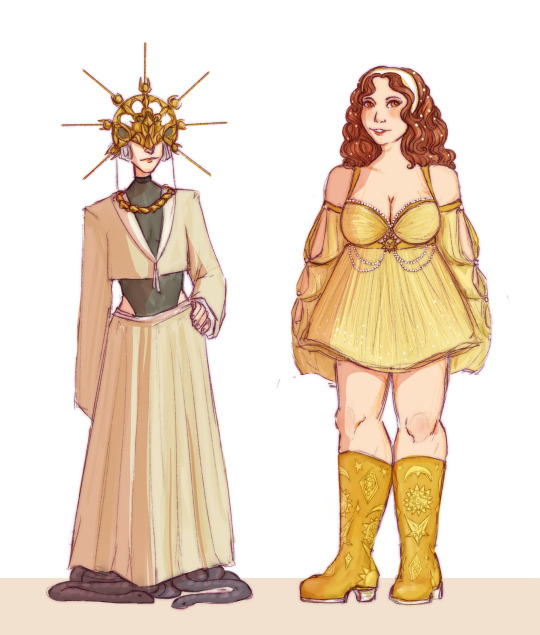

Fashion Souls
#i had drafts of solaire and lautrec but coulde quite get them down?#if people like this i will revisit!!#dark souls#ds1#dark sun gwyndolin#gwynevere princess of sunlight#crossbreed priscilla#chaos witch quelaag#quelaag#gwyndolin#gwynevere#priscilla
183 notes
·
View notes
Text
Hey girl


5 notes
·
View notes
Text
Dark Souls 1 tricks you into seeing Quelaag as an evil seductress, she is not.
Allow me to spill out some thoughts that have been stewing in my mind for a while.
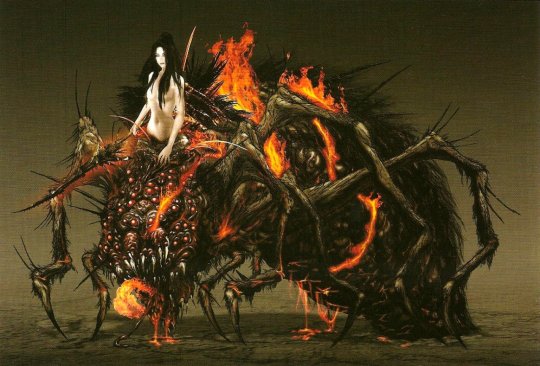
When you first get the Quelaag cutscene, it is incredibly male-gazey. It frames her monster body first as horrifying and disgusting, then quickly cuts to glamour shots of her naked female form.
This may be normal for a lot of games, but that’s not Dark Souls. They don’t do that. They never do fan service! So why now?
That’s because Quelaag is a reference to the black widow trope.

The Black Widow Trope is one you see everywhere; and though it’s usually associated with spiders it does not have to be. The trope is the sexy women, who secretly is some monster luring straight men in and feeding on them.
The way the camera frames Quelaag, and the way she is designed, wants you to dismiss her completely as another black widow. Another women using her sex appeal to lure you to your death.
Except, she’s not.
She didn’t lure you.
You went through barrier after barrier, you broke into her house with weapons drawn, and you killed her.
But you may not think about that first playthrough. The first time you kill her you probably didn’t feel bad.
Not until you move forward, and find the sick sister she was protecting from the man that broke into her home. A sister that loved her. Then you realize. Then you feel bad. Then you question what you’re even doing, and if you are the hero.
96 notes
·
View notes
Text





A happy family.
Chaos Witch Quelaag, Quelaag's Sister, Quelana of Izalith, and Bed of Chaos.
#dark souls#chaos witch quelaag#quelaag#quelaag's sister#quelana#bed of chaos#fromsoft#fromsoftware#soulsborne#soulslike#concept art#dark souls concept art#soulsborne concept art
44 notes
·
View notes
Text
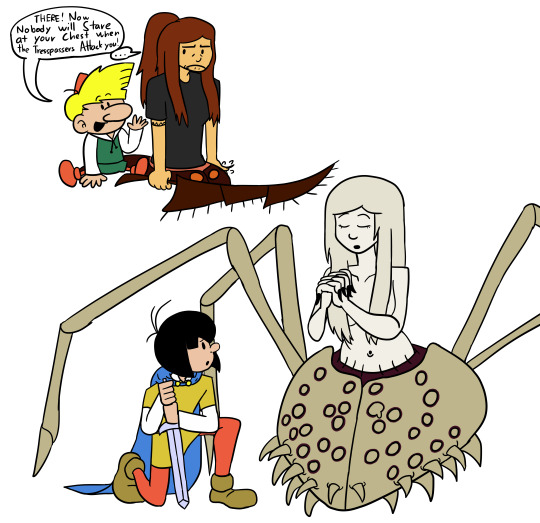
Johan and Peewit meeting more Dark Souls Characters like Quelaan and Quelaag...
(I know this looks Bad because this is my First Time drawing the Crab Spider Ladies...)
#sir johan#johan and peewit#johan et pirlouit#peewit#johan#pirlouit#smurfs#the smurfs#cartoon#crossover#dark souls#quelaan of izalith#quelaag of izalith#chaos witch quelaag#quelaan#quelaag#soulsborne#from software#dark souls remastered#smurf
25 notes
·
View notes